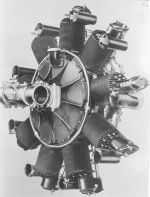
Packard DR-980 Diesel
One such example is the Stewart M-2, a high-wing twin that was an early DR-980 user, only to
later replace them Wright R-975s.
The Stewart M-2
An Early Packard Diesel Application
By Samuel S. Stewart, III
Published 16 May 2021; Updated 19 May 2021
The collapse of the Flint Aviation Company in 1919 did not dim Samuel S. Stewart's views on the future of aviation. In 1927 he brought Lt. John L. Hunt to Flint, Michigan to design a plane. Lt. Hunt, or Jack as he was known, was a World War I aviator and had taught Stewart to fly. Earlier Hunt had run a flying school out of Detroit.
The Stewart M-1 was probably completed in 1928. It was a cantilevered mid-wing monoplane about which we know practically nothing. Its dimensions, specifications, performance, engine, propeller, history and designer’s identity remain a mystery
 |
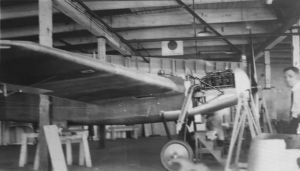 |
| M-1 (left) with the M-2 | M-1 Photograph Dated 14 May 1928. The engine was an upright V-8 whose make and model have not yet been identified. |
The Stewart M-2 first flew in 1930. When the W.F. Stewart Co.'s appropriation for the venture was exhausted, "Sid" Stewart decided against manufacturing the plane in quantity, having unsuccessfully sought a market for it. The M-2 cost around $40,000 to build and had more planes been built it was estimated that the cost per plane would be $27,000.
Many associates wanted the owner to form a corporation and sell stock, but Mr. Stewart would not do it, for while he had confidence in the future of the twin-engined monoplane he realized it was a gamble and refused to risk anyone's money but his own. The idea was dropped and the plane was sold.
For close to ten years the ship was used by Abrhams Aerial Survey Co. of Lansing, Michigan for aerial photography. It was retired by the Babson Brokerage firm in 1940.
Although a few years ahead of its time, the M-2 was a unique contribution to the advancement of aviation. Near the end of 1930, construction was completed and as of December 6, 1930, word was received from Gilbert Budweg, U. S. Director of Air Regulations, that the technical data had been approved by the Federal authorities. (technical data refers to sizes, weights, stresses, and load measurements). The next step was to arrange for an engineering inspection and test flight .With Detroit's Department of Commerce engineering staff the original design figures were checked out and flight tests were begun immediately.
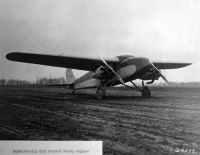 |
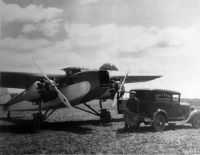 |
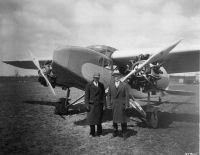 |
 |
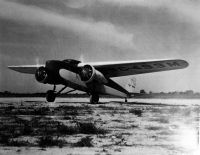 |
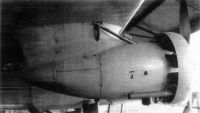 |
| Packard DR-980 Power | Wright R-975 Power | Experimental Townend Ring | |||
Throughout the winter Hunt took the ship up many times, all from Bishop Airport. Several flights were to neighboring airports and every test was met with ease. With one engine off the plane climbed as high as 9,000 feet, doing this once while overloaded by 300 pounds. Naturally, there was considerable secrecy concerning the details of the new ship while the tests were being made.
Final approval by the Aeronautics Branch of the Department of Commerce was announced to the public on June 11, 1931 whereby a certificate was granted. Perhaps the most outstanding feature was the abundance of power built into the plane. The fully loaded ship could rise, fly, and maneuver with one engine shut off; this was a valuable safety factor. Also, by using two engines, it was possible to run both engines slower for the same amount of power and thereby decrease noise and vibration.
Particular attention was also given to comfort in the plane. It had been equipped with a large, roomy cabin with places for six persons in the most comfortable seats obtainable. Another important feature that combined safety and commercial feasibility was the fact that there was no engine in the nose where most aircraft engines were located. Speed and safety were among the chief characteristics built into the craft that gave it a high ranking among other airplane models. The design and performance features made the plane especially desirable for use by commercial executives whose time and lives were most valuable – an asset for carrying passengers and mail on "feeder" lines for national air transportation networks.
 |
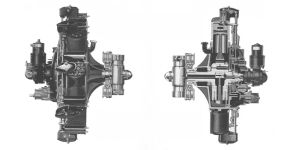 |
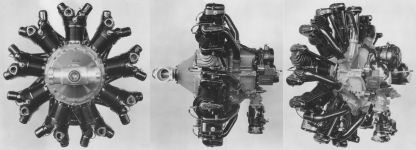 |
| Packard DR-980 | Wright R-975 | |
| Span | 52 feet |
| Overall Length | 37 feet |
| Overall Height | 12 feet |
| Power | Original, two Packard DR-980 Diesels, 225 hp at 1,950 rpm Later, two Wright R-975D (J-6-9), 300 hp at 2,000 rpm |
| Performance | |
|---|---|
| High Speed at Sea Level | 155 mph |
| Cruising Speed | 130 mph |
| Landing Speed | 60 mph |
| Initial Climb | 1,000 fpm |
| Ceiling | 24,000 feet |
| Single Engine Ceiling | 9,000 feet |
| Gross Weight | 5,700 lb |
| Construction | |
| Wing | Full cantilever, two spruce box spars, plywood ribs and covering |
| Fuselage | Welded chrome – molybdenum steel tubing, fabric covering |
| Chassis | Slit axle type, oleo shock absorbers in vertical member |
| Tail Surfaces | Welded steel tubing, fabric covering, steel tubing and wire bracing |
| Nacelles | Welded steel tubing, metal covering, suspended from wing |
| Inspection Provisions | Sections of nacelle and cowling easily removable for engine inspection. Openings provided in fuselage and wing covering for control inspection. |
| Color | Ivory and Blue |
| Note: | Plane could be airborne in 5 seconds |
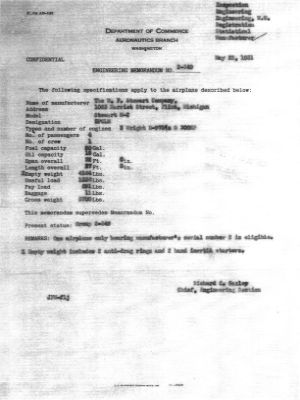 |
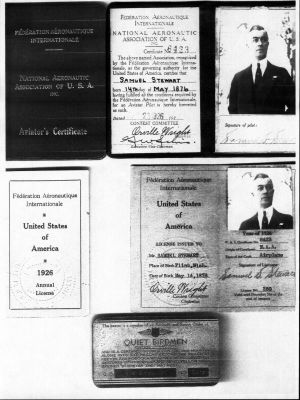 |
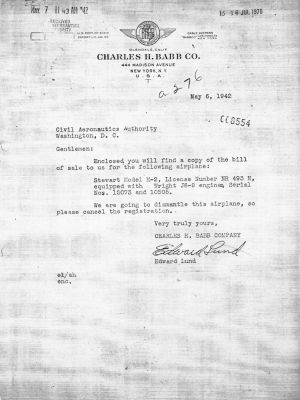 |
| Stewart M-2 Official Specification | Samuel S. Stewart’s Licenses | Registration Cancellation |